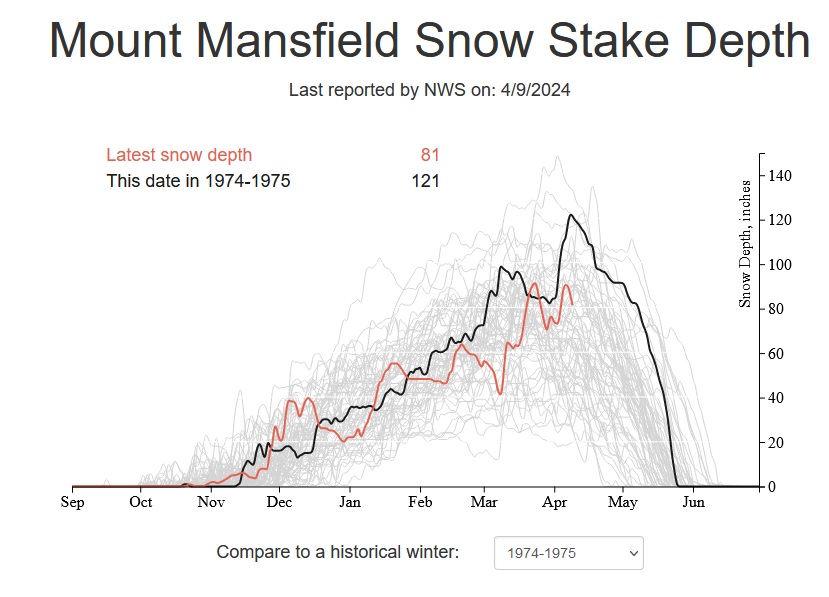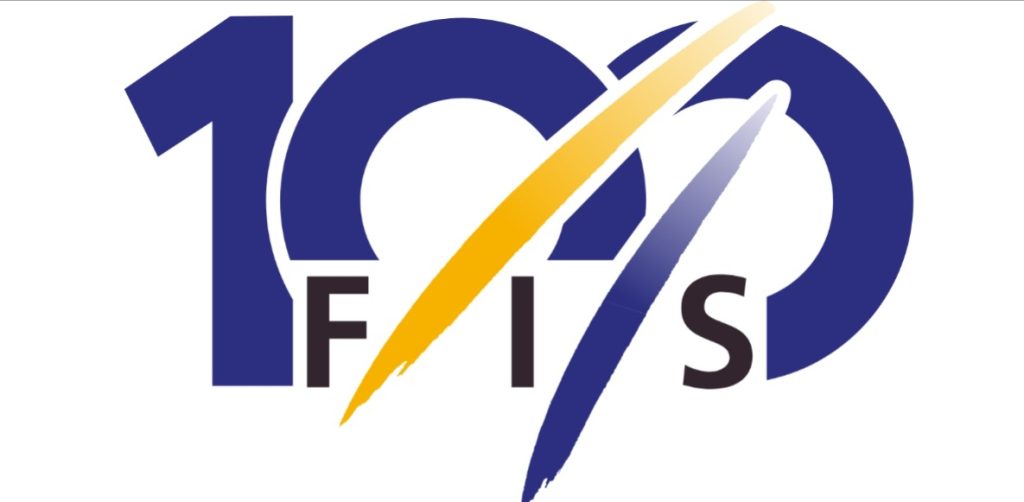Wow! This ski season is going out with a bang! Getting arguably our biggest snowfall of the season in April triggered memories of another big April storm from years ago! Friends will tell you I have often shared stories of the amazing April skiing from that storm. I knew it was in the 1970s, but I really wasn’t sure what specific year it was.
So I consulted the Mount Mansfield Snow Stake data! Matt Parrilla maintains an excellent website (https://matthewparrilla.com/mansfield-stake/) that graphically presents the historic stake data back to 1955! The underlying data comes from the National Weather Service in Burlington and is updated daily. This chart has been used as an example of an effective visualization in the Harvard Business Review!
I actually downloaded the detailed daily data from the site to be able to hone in on when we had that memorable April storm. It was in 1975! The stake had been hovering in the mid-80s with an April 1st depth of 84 inches. That would jump to 97 inches on April 3rd so the storm probably started on the 2nd. The storm continued for several days with the stake climbing steadily until the 8th when it peaked at 122 inches! That’s 38 inches in less than a week.

And that’s the way I remember it. The conditions got better every day. I was living in the Burlington area where the storm did dump a significant amount of wet snow on the first day, but that was it. Meanwhile on the mountain it kept snowing and it was drier snow, making for great skiing. There was also a steady wind which would refill your tracks on every run. One reason I remember that storm so well is that it’s probably the only time I skied the top of Goat multiple times in one day!
I’d be interested in hearing from anyone else who remembers that 1975 April storm.
As I mentioned last week, 2024 marks the 100th Anniversary of the FIS. Larry Heath had the answer to last week’s trivia that FIS stands for Fédération Internationale de Ski, en Francais . Actually in 2022 it was extended to Fédération Internationale de Ski et de Snowboard to be more inclusive. Bill Leonard also had the correct answer.
The FIS is the governing body for international ski and snowboard competitions. It’s stated Vision is “To deliver outstanding, inspiring experiences that fuel a lifelong passion for snowsports increasingly shared everywhere.”
The FIS was founded in 1924 in Chamonix France at the International Winter Sports Week which would later be recognized as the first Winter Olympic Games. Fourteen countries including the United States agreed to form the organization. It replaced a more Euro-centric International Ski Commission (CIS). Of course in 1924 “skiing” meant Nordic events such as Cross Country and Jumping.
Through the years the FIS has incorporated almost all competitions including Alpine Skiing, Cross-Country Skiing, Ski Jumping, Nordic Combined, Freestyle Skiing and Snowboarding, Para Alpine, Para Nordic and Para Snowboard. Today the FIS has 140 member countries and represents 30,000 active athletes. It coordinates over 7000 events around the world annually.
Any mention of FIS brings up the topic of FIS points. FIS points determine the ranking and seeding of competitors. How these points are calculated for the traditional alpine skiing disciplines is complex, to put it mildly. I was visiting MIT last weekend and I think I saw a graduate course on the topic. Suffice it to say that less-is-more, skiers with zero FIS points in a discipline are the top ranked. How many points a skier is awarded in a race obviously depends on where they finish, but also on the points of the other competitors in the race. These FIS points are not to be confused with FIS World Cup points which determine the annual World Cups in each discipline and overall. Those follow a more conventional formula of 100 points to the race winner, 80 to second, 60 to third, continuing down to 1 point for 30th place.
One interesting FIS fact I discovered in researching this column is that there have only been 5 Presidents of the FIS in those 100 years. And the current President has only been in the job for 3 years. The primary reason for this was that Marc Hodler served as President from 1951-1998, 47 years! The current President is Julian Eliasch who took over in 2021. He previously was the CEO of Head sporting goods.


Leave a Reply